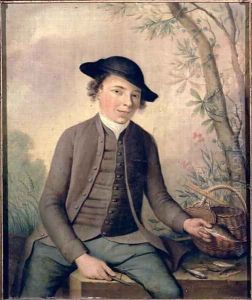Nicolaes Rijnenburg Paintings
Nicolaes Rijnenburg was a Dutch artist born in 1674 in the Netherlands, during a period known as the Dutch Golden Age, which is renowned for its remarkable contributions to art, science, trade, and military might. Despite the wealth of talents emerging from this era, including the likes of Rembrandt and Vermeer, Rijnenburg may not be as universally recognized as his contemporaries. However, his contributions to the art world, particularly in the realms of painting and printmaking, provide a fascinating glimpse into the period's artistic diversity and the individual paths artists carved for themselves.
Rijnenburg's work was primarily focused on landscapes, a popular genre in Dutch art, reflecting the nation's profound connection with its natural and cultivated environments. His landscapes often depicted the serene and idyllic Dutch countryside, filled with meticulous details that captured the beauty and tranquility of nature. This was a time when landscape painting was evolving from mere backgrounds for historical and biblical scenes to significant subjects in their own right, a shift that artists like Rijnenburg helped to foster.
Not much is documented about Rijnenburg's life, which is a common fate for many artists of the time not named Rembrandt or Vermeer. However, his surviving works suggest that he was deeply influenced by the Dutch tradition of fine detail, careful observation, and a profound appreciation of the natural world. These elements were combined with a skilled application of light and shadow, techniques that had been refined by earlier masters and were being continually developed during the period.
Rijnenburg's death in 1750 marked the end of a life dedicated to the arts during one of the most flourishing periods in Dutch history. While he may not have achieved the lasting fame of some of his peers, his work remains a testament to the vibrancy and depth of Dutch landscape painting in the 17th and 18th centuries. Today, his paintings and prints can be found in various collections, offering a window into the Dutch Golden Age's lesser-known but equally talented artists.
